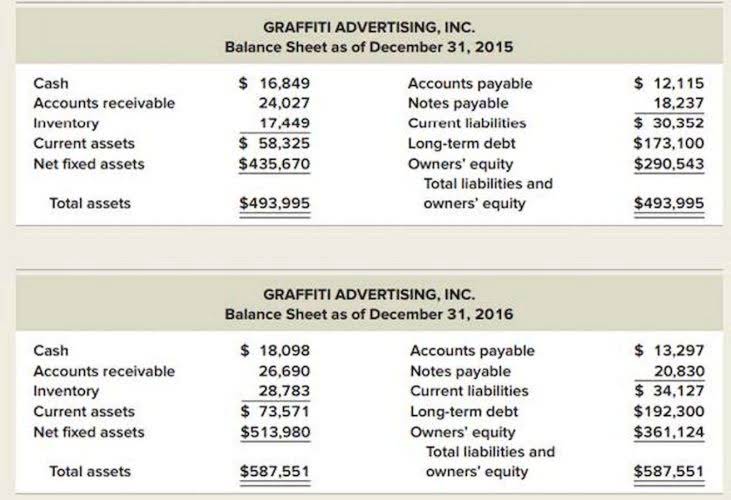Why Drinking Alcohol Can Cause Bruising

Alcoholics may also have darker bruises due to the increased amount of blood in their body. If you notice that you or someone you know is bruise easily, it may be a sign of alcoholism. But if you notice that you’re bruising more easily than usual, or the bruises are larger and are accompanied by other symptoms, it’s best to follow up with a healthcare professional. The liver’s many functions include producing clotting factors. Newborns often have very low levels of vitamin K, which are insufficient to stop bleeding. Without a vitamin K injection at birth, babies may bruise easily or bleed excessively.
Some Causes of Excessive Bleeding
- Heavy alcohol consumption has been linked to more than 60 different diseases.
- Meanwhile, binge drinking focuses more on how quickly and how much you drink in one sitting.
- Severe abdominal pain and persistent diarrhea, as a result, is not fixable.
- Fifty percent of patients with ascites typically die within two years if they don’t have a liver transplant.
The formation of blood clots relies on good nutrition, a healthy liver, and healthy bone marrow. If any of these factors are slightly off, bruising can occur more easily. Platelet disorders first cause small dots that https://ecosoberhouse.com/ appear red or purple on light skin and brown on dark skin (called petechiae). Later, if the disorder becomes severe, bleeding may occur. A decrease in blood clotting factors usually causes bleeding and bruising.
Liver disease
Those with a very low platelet count often need platelet transfusions. Doctors may give fresh frozen plasma, which contains all clotting factors, to a person with a clotting disorder until the specific deficiency has been identified. Once the deficient factor is identified, the person can be given a transfusion of that clotting factor. Liver damage typically results from a serious case of alcoholism.
what causes painless little blood blisters on the skin?
- They may appear red in the face or look bloated and generally unwell.
- But some people who drink face a risk of developing this chronic and progressive disease, which affects roughly 1 in every 8 Americans and contributes to about 88,000 deaths annually.
- When the cause of bruising is unclear, your doctor will likely order blood work to check for platelet problems or other blood clotting abnormalities.
- For the average healthy guy (say, drinking one or two drinks per night, or fewer than 14 drinks per week) the alcohol-related effects on bruising are temporary, and no real cause for concern.
Because alcohol is a potent diuretic, it can quickly dehydrate you, leading to the characteristic symptoms of a hangover, including a throbbing headache. Research reviews have also listed alcohol as a culprit for triggering migraine attacks. According to the CDC, moderate drinking is defined as having two standard drinks or less per day for men and one drink or less per day for women. For some of us, half a dozen drinks during a night out aren’t yet enough to faze us. And yes, you may feel great and energized upon waking up—but that doesn’t mean you didn’t have too much to drink the night before.

Think you have a drinking problem?

Someone with decompensated cirrhosis may develop ascites (or fluid in the abdomen), gastrointestinal bleeding, and hepatic encephalopathy, in which the brain is affected. Cirrhosis is considered end stage liver disease as it cannot be reversed and can lead to liver failure. Cirrhosis is further categorized as compensated and decompensated. In liver failure, the liver is severely damaged and can no longer function.

Yellowing of your skin and eyes
Liver damage influences coagulation and can result in a deficiency of clotting proteins, so patients will bruise or bleed more easily. While we are all prone to occasional bruises, some conditions do alcoholics bruise easily may increase your risk of bruising and slow the healing process. Alcohol is a major contributing factor to liver disease, but the condition can also result from cancer and other health issues.
- Losing valuable fluid and nutrients from your body can lead to wrinkled, dry, puffy or just generally unhealthy-looking skin.
- Bruises usually heal without treatment, but raising the bruised part and applying ice covered in a cloth may help reduce swelling.
- There are inpatient and outpatient options, but an addiction specialist should determine the best level of care for you based on your individual needs.
- Genetic conditions that cause you to bruise easily are often diagnosed with blood tests.
- If you need help because of domestic violence or sexual assault, talk with a healthcare professional, or access resources and assistance through our domestic violence resource guide.
- Iron deficiency anemia is a frequent cause of easy bruising.
When to See a Doctor About Your Bruises
Jaundice can be a physical sign of liver problems, where the skin takes on a yellowish-brown tone due to high levels of bilirubin in the body. While many things could lead to you developing jaundice, a common cause is high levels of alcohol consumption. For the average healthy guy (say, drinking one or two drinks per night, or fewer than 14 drinks per week) the alcohol-related effects on bruising are temporary, and no real cause for concern. Having hepatitis C or other liver diseases with heavy alcohol use can rapidly increase the development of cirrhosis.


That would depend on whether the depreciation is on property and equipment related to the manufacturing process or not. With a solid financial plan in place, you can identify which components are driving up your product costs and adjust accordingly. In this guide, we’ll show you how to calculate product cost and how doing so can help you make informed decisions about crowdfunding, refine your pricing strategy, and improve profitability. In other words, period costs are related to the services consumed over the period in question.
Period Costs vs. Product Costs
They are also included in determining the amount of revenue that has been earned when an asset is sold, which in turn can affect both revenues and costs in future accounting periods. To make a profit and keep your bakery thriving, you’ll likely set a price for your cakes that’s higher than $10. Product costs help you set these prices, ensuring you cover all the expenses and have some left for profit. So, product costs become your pricing compass, guiding you to set prices that keep your bakery in business. Accurately calculating product costs also assists with more in-depth analysis, such as per-unit cost. Per-unit cost is calculated by dividing your costs by the number of units produced.
How to Determine a Period Cost?
Because product and period costs directly impact your financial statements, you need to properly categorize and record these costs in order to ensure accurate financial statements. In other words, period costs are expenses that are not linked to the production process of a company but rather are expenses incurred over time. The period cost is important and a necessary thing to keep track of because it allows you to know your company’s net income for each accounting period. Keeping track of the period of cost is also important for filing accurate business taxes and for preparing for an audit. Tracking period costs will also help a business balance its budget and gain savings. It will also allow a business to focus on growing and controlling direct costs.
Considerations in Production Costs Calculations
It is an important metric, particularly when determining product pricing. The main characteristic of these costs is that they are incurred over a period of time (during the accounting period). These costs may include the cost of raw materials used in production, wages of workers who operate in producing goods, or the cost of utilities consumed by manufacturing facilities. Period costs take up most of the space on the expense section of your income statement. In some cases, it will be too expensive for a company to eliminate certain types of period costs from its operations.
- If product and period costs are overstated or understated, or not recorded at all, your financial statements will be wrong as well.
- The articles and research support materials available on this site are educational and are not intended to be investment or tax advice.
- Instead, they’re more about keeping the business running smoothly and supporting its overall operation.
- Unlike period costs, product costs are tied to the production of a product.
- Period costs are the expenses that a company incurs during a specific accounting period but aren’t directly related to the product’s development.
Period costs vs. product costs: What’s the difference?
Every cost incurred by a business can be classified as either a period cost or a product cost. A product cost is incurred during the manufacture of a product, while a period cost is usually incurred over a period of time, irrespective of any manufacturing activity. A product cost is initially recorded as inventory, which is stated on the balance sheet. Once the inventory is sold or otherwise disposed of, it is charged to the cost of goods sold on the income statement. A period cost is charged to expense on the income statement as soon as it is incurred. Product costs include direct materials, direct labor, and overhead expenses.

Period expenses are costs that help a business or other entity generate revenue, but aren’t part of the cost of goods sold. Word-of-mouth often takes a blend of advertising, product development, sales, and customer support to ensure growth. This not only helps you determine the next project to prioritize but also maximizes your profits. Understanding how to properly categorize these costs helps you optimize your spending, prioritize investments, and ultimately, drive the company’s growth and success. One way to identify a period cost is to assess how the cost is incurred. The person creating the production cost calculation, therefore, has to decide whether these costs are already accounted for or if they must be a part of the overall calculation of production costs.
Create a minimal viable product (MVP)

The main benefit of classifying costs as either product or period is that it helps managers understand where their costs are being incurred and how those costs relate to the production process. This information can be used to make decisions about where to allocate resources and how to improve efficiency. However, you’ll still have to pay the rent on the building, pay your insurance and property taxes, and pay salespeople that sell the products currently in inventory. Since product costs are linked to a product, a company can report such costs in the category of cost of goods sold on the income statement. To quickly identify if a cost is a period cost or product cost, ask the question, “Is the cost directly or indirectly related to the production of products?

Product cost: assessing the true cost of production and setting product prices
What a company expects to pay during a particular accounting period is included in an expense account while what it pays during the period goes into a prepaid expense account. Period costs are like the backstage crew ensuring the business show runs smoothly. Remenber, they include period costs formula things like rent, salaries, and advertising costs? But they’re ongoing expenses necessary for the daily operation of the entire bakery. Operating expenses are the funds a business pays regularly to stay in business – rent, salaries, and advertising costs, to name a few.
What is the benefit of classifying costs as products or periods?

So if you pay for two years of liability insurance, it wouldn’t be good to claim all of that expense in the period the bill was paid. Since the expense covers a two year period, it should be recognized over both years. As mentioned before, there is no clear formula for calculating period costs. Period costs are typically located on the income statement for the accounting period in which they are incurred.
